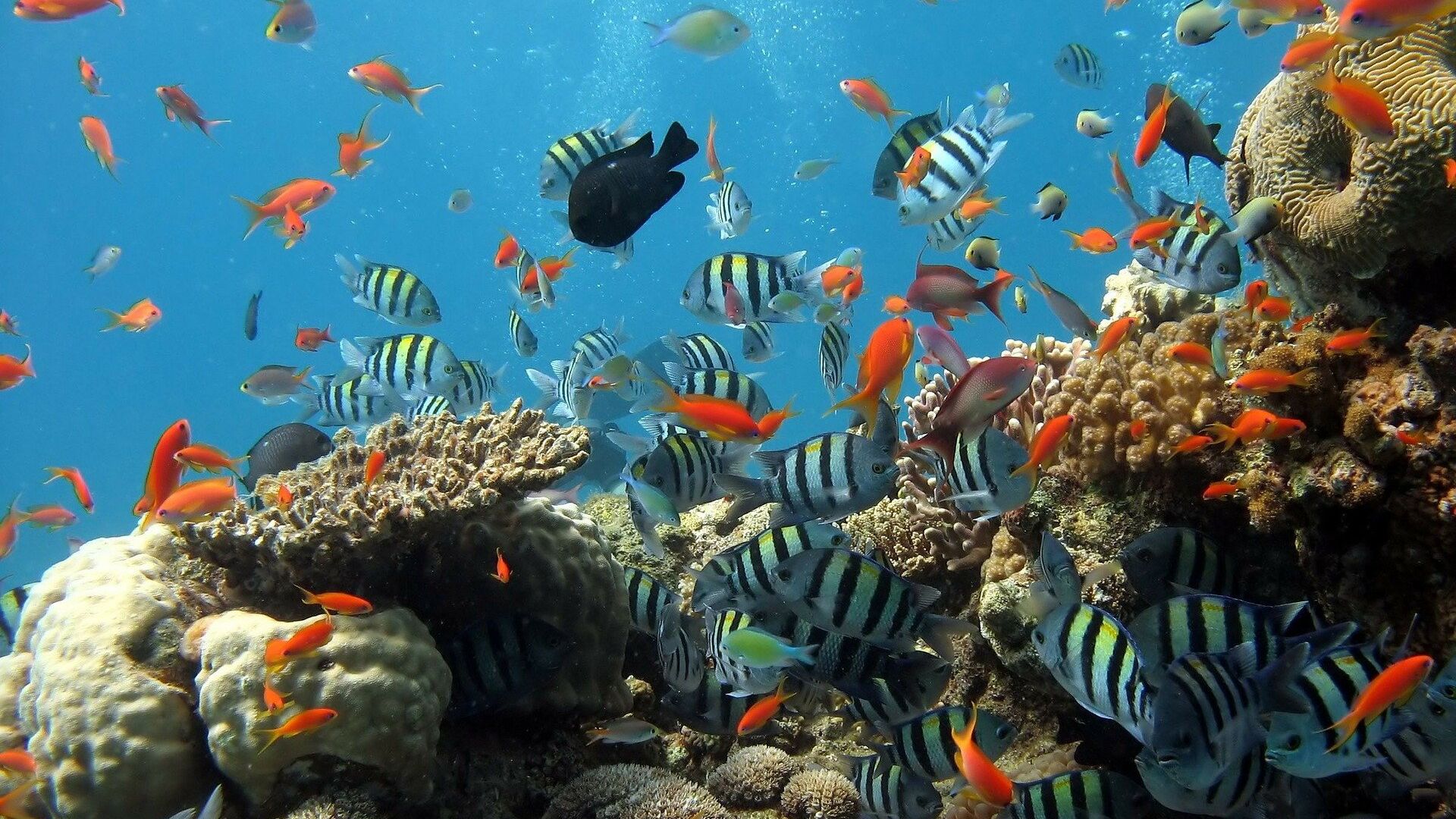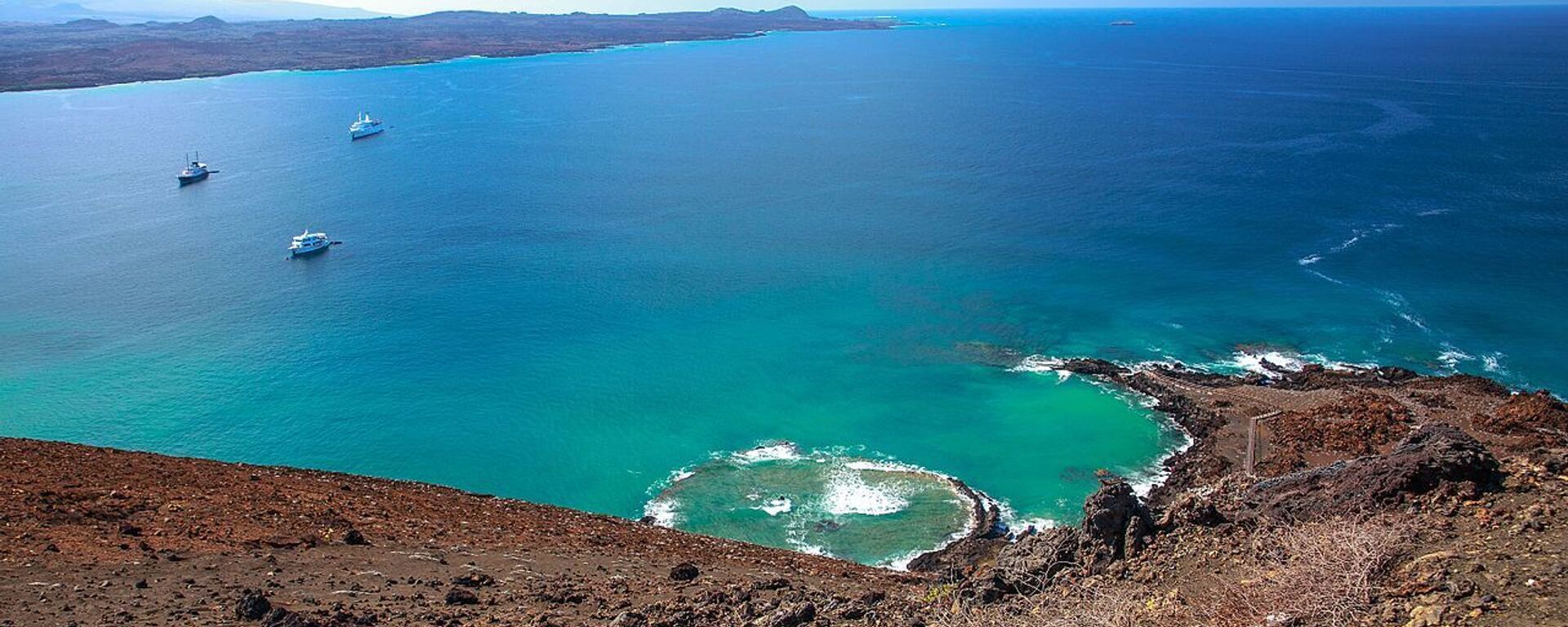https://sputnikglobe.com/20240224/scientists-stumble-upon-bounty-of-underwater-mountains-never-before-seen-species-1116949433.html
Scientists Stumble Upon Bounty of Underwater Mountains, 'Never Before Seen' Species
Scientists Stumble Upon Bounty of Underwater Mountains, 'Never Before Seen' Species
Sputnik International
Lurking in the remotest parts of the world's oceans are rarely-seen rock formations and troves of unexplored biodiversity, suggesting that new species and life forms are yet to be named.
2024-02-24T14:40+0000
2024-02-24T14:40+0000
2024-02-24T14:40+0000
beyond politics
earth
society
newsfeed
science & tech
ocean
ecosystem
https://cdn1.img.sputnikglobe.com/img/106414/84/1064148413_0:100:1921:1180_1920x0_80_0_0_b8aa62752de4680a173594fbb87f1f60.jpg
The Schmidt Ocean Institute scientists have found a vast underwater mountain accommodating over 100 strange and extraordinary creatures while exploring the waters off the Chilean coast."We far exceeded our hopes on this expedition," said research team leader Dr Javier Sellanes. "You always expect to find new species in these remote and poorly explored areas, but the amount we found, especially for some groups like sponges, is mind-blowing."The seamount with the highest peak was unofficially named Solito (Lonely) by the experts, standing at 3,530 meters — four times taller than Dubai’s Burj Khalifa scyscraper.The aquatic robot's footage revealed an array of creatures like rare whiplash squid, brilliant red fish, spiraling coral formations, Oblong Dermechinus sea urchins, squat lobsters, sea spiders, web-like sponges and spiky urchins."Full species identification can take many years," Dr Jyotika Virmani, executive director of the Schmidt Ocean Institute told media. "Dr Sellanas and his team have an incredible number of samples from this amazingly beautiful and little-known biodiversity hotspot.He said the institute had partnered with the Nippon Foundation – Nekton Ocean Census Program, which has set a target of finding 100,000 new marine species in the next 10 years."Once identified, these new species will be a part of that," Virmani said.
https://sputnikglobe.com/20230418/scientists-discover-coral-reef-in-unmapped-galapagos-islands-territory-1109609656.html
earth
Sputnik International
feedback@sputniknews.com
+74956456601
MIA „Rossiya Segodnya“
2024
Chimauchem Nwosu
https://cdn1.img.sputnikglobe.com/img/07e7/09/01/1113046371_0:99:1536:1635_100x100_80_0_0_9c5c627283eca931c39fe4852bbb301c.jpg
Chimauchem Nwosu
https://cdn1.img.sputnikglobe.com/img/07e7/09/01/1113046371_0:99:1536:1635_100x100_80_0_0_9c5c627283eca931c39fe4852bbb301c.jpg
News
en_EN
Sputnik International
feedback@sputniknews.com
+74956456601
MIA „Rossiya Segodnya“
Sputnik International
feedback@sputniknews.com
+74956456601
MIA „Rossiya Segodnya“
Chimauchem Nwosu
https://cdn1.img.sputnikglobe.com/img/07e7/09/01/1113046371_0:99:1536:1635_100x100_80_0_0_9c5c627283eca931c39fe4852bbb301c.jpg
underwater mountain exploration chilean coast, nippon foundation – nekton ocean census program partnership, seamount clusters discovery, aquatic robot footage marine biodiversity, marine biodiversity, coral formations, rare marine species.
underwater mountain exploration chilean coast, nippon foundation – nekton ocean census program partnership, seamount clusters discovery, aquatic robot footage marine biodiversity, marine biodiversity, coral formations, rare marine species.
Scientists Stumble Upon Bounty of Underwater Mountains, 'Never Before Seen' Species
Lurking in the remotest parts of the world's oceans are rarely-seen rock formations and troves of unexplored biodiversity, suggesting that new species and life forms are yet to be named.
The Schmidt Ocean Institute scientists have found a vast underwater mountain accommodating over 100 strange and extraordinary creatures while exploring the waters off the Chilean coast.
The team, using an underwater robot, discovered a 1,800-mile-long territory that is home to over 200 seamount clusters. The submersible descended to depths of 4,500 meters and mapped 20,377 square miles of the seafloor, finding four new mounts with their own separate ecosystems.
"We far exceeded our hopes on this expedition," said research team leader Dr Javier Sellanes. "You always expect to find new species in these remote and poorly explored areas, but the amount we found, especially for some groups like sponges, is mind-blowing."
The seamount with the highest peak was unofficially named Solito (Lonely) by the experts, standing at 3,530 meters — four times taller than Dubai’s Burj Khalifa scyscraper.
The aquatic robot's footage revealed an array of creatures like rare whiplash squid, brilliant red fish, spiraling coral formations, Oblong Dermechinus sea urchins, squat lobsters, sea spiders, web-like sponges and spiky urchins.
"Full species identification can take many years," Dr Jyotika Virmani, executive director of the Schmidt Ocean Institute told media. "Dr Sellanas and his team have an incredible number of samples from this amazingly beautiful and little-known biodiversity hotspot.
He said the institute had partnered with the Nippon Foundation – Nekton Ocean Census Program, which has set a target of finding 100,000 new marine species in the next 10 years.
"Once identified, these new species will be a part of that," Virmani said.




